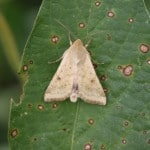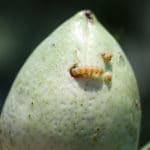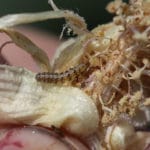As of this today (July 24), the bollworm moth flight has not kicked off. Traditionally, we will start seeing a significant increase next week or the first week of August. This year, I expect to see a gradual increase but an extended flight because of the wide range of corn planting dates.
Bollworm resistance to some Bt toxins (Cry1 and Cry2) in Bt cotton is now well documented. Bt cotton will still provide some control of bollworm larvae, but we should expect that some if not most fields of Bollgard 2 and TwinLink will require treatment for bollworm. If recent experience holds true, it is unlikely that treating for bollworm in Bollgard 3, TwinLink Plus, or WideStrike 3 will be needed in Tennessee. These technologies all express the VIP 3A toxin (in addition to Cry1 and Cry2 toxins). However, scouting is still necessary.
In all technologies, including non-Bt cotton, treatment is recommended if 6% damage to fruiting structures is observed (an equal mix of square and bolls), or anytime 3% boll damage is observed, and worms are still present. For Bollgard 2 and TwinLink varieties (no VIP trait), treatment is also recommended if 20-30% eggs or 4 live worms are found per 100 plants (excluding any tiny, freshly hatched larvae).
The diamide insecticides, namely Besiege (7-10 oz/acre) or Prevathon (14-20 oz/acre), are the best products to control bollworm. These products often provide two weeks of residual control and sometimes longer if higher rates are used. Having said that, it is hard to kill large larvae and timely application is still important. Other insecticide options are listed here, but I seldom recommend these alternatives except in situations of relatively low pressure and late in the season when residual control is not needed.





One thought on “Thinking About Bollworm Management in Cotton”
Comments are closed.